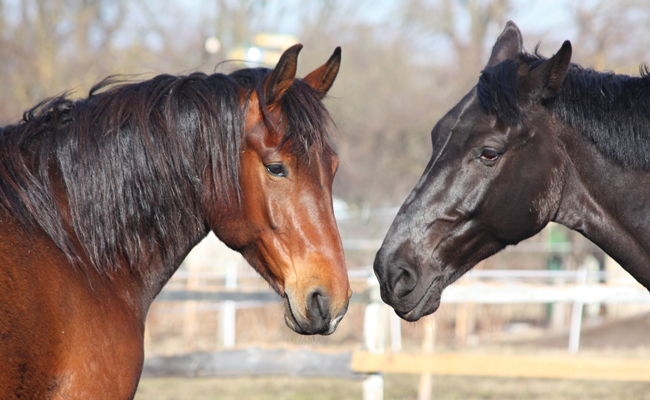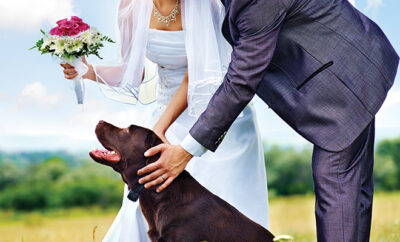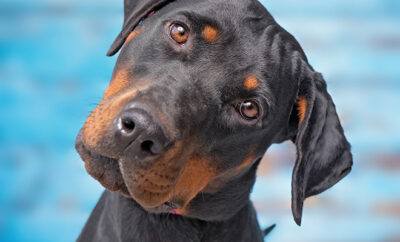
Why Do They Do That?
How cute! Many of us have said that when viewing funny animal videos on the Internet, such as the dog that opens and closes doors and put dishes in the dishwasher.
More than 60 percent of American homes host either a cat or dog or multiples thereof. Animals are our companions; they relieve our stress, make us laugh, protect us and sometimes even save our lives.
Primatologist Frans de Waal believes that we are drawn to what he calls “furry carnivores” because they seem to mirror our emotions. With families today far apart, more people depend on their pets for companionship. According to a survey by Wellness Natural Food, 62 percent of dog owners credit their pets with keeping them more active; 81 percent believe their pet alleviates stress in their life. Thirty-eight percent attribute pet ownership to making them more social, especially 18- to 24-year-olds.
We’ve all observed interesting behaviors in our pets. For example, why are dogs so easy to train? Why are they protective of their owners and territory? Why are they sociable to humans and other dogs, while cats have a reputation for being aloof?
I remember the day a Doberman charged me as I collected my mail. I could hear my dog Jupiter, a small scrappy terrier, barking, and in a flash, he charged out of the house toward the larger dog. Expecting fur to fly, I was amazed when he chased the larger dog a half mile down the road, the Doberman’s stumpy tail pressed between his legs. Sarah Fougere’s Golden Retriever, Buff, walks a neighbor’s Lhasa Apso/Shih-tzu, “by gingerly taking her leash in his mouth and guiding her outside. When she falls behind, he looks back and gently pulls on the lead.”
Dogs are pack animals with the instinct to affiliate. Some behaviorists speculate dogs diverged from wolves when gentler wolves decided to hang out at the perimeter of the campfire and eat rubbish instead of hunting their own food. Dogs are extremely sensitive to our facial cues, moods and direction. Even a dog with minimal training will learn basic house rules such as what furniture not to jump on and which door to be let out of. There also could be a selfish side to their love—dogs may feel that if their human is endangered, their source of food and water may be also. In her book Inside a Dog, Alexandra Horowitz says humans have “selected” dogs for our purposes. In response to our care, dogs will hunt, herd, guard, police, guide the blind and deaf, engage in sport, and rescue people from burning buildings.
Our relationship with cats is different. Cats are known to be independent. In the wild they hunt alone. But they can also be wildly affectionate, “head butting,” rubbing and kneading. They were first domesticated as mousers but have been prized companions as far back as the ancient Egyptians.
Scientists believe that when cats butt or rub against an object they are depositing their pheromones–marking their territory. Besides expressing love, they may also be claiming you as theirs. Have you ever wondered why cats purr? It’s been hypothesized that purring plays a role in healing as well as in expressing pleasure. But cats also purr when afraid, so one scientist believes that purring is the equivalent of a smile, just as humans smile when we’re happy or nervous.
Dogs and cats aren’t the only treasured companions. Writer Linda Ellingsworth’s first horse, a Quarter Horse mare, “was a smart, wily veteran trail horse who knew I was fairly inexperienced. I swear she sat up at night thinking of things to do to mess with me.” For instance, her horse would always make sure Linda got good and wet when passing through a familiar small lake.
In her book Country Love and Laughter, Jaqueline Gordon tells a poignant story of how her family’s horse let them know of the illness of an older horse by coming to the gate and whinnying.
Horses were first hunted for meat before humans found them useful for transportation, racing, agriculture and war. Yet as valued as they are as domestic animals, horses exhibit stubbornness and displeasure at times. Horses are also capable of great affection, showing this with each other by gently nuzzling each other and by “sharing breath,” an intimate gesture in which two horses put their noses together and share the air. When a horse approaches a human in curiosity and affection, our instinct is to reach to touch that silky nose. The horse likely will respond by moving his head sideways or up and down, signaling that his personal space has been invaded. It’s best to stand still and accept the horse’s behavior, mirroring his show of affection.
Although we tend to anthropomorphize our pets, the study of animal behavior is fascinating. We can become more empathetic with the animals in our lives as we learn more about exactly why they do what they do. HLM
Sources: btgstudios.com, dogcognition.com, pets.thenest.com and wayofthehorse.org.







